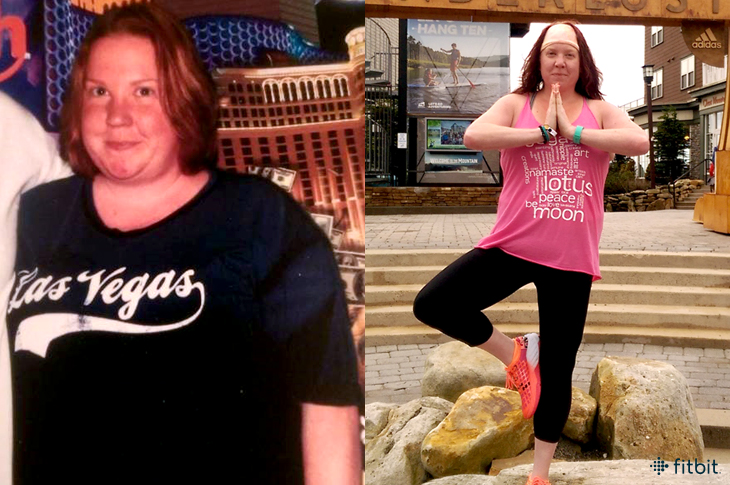 When Amanda L., 34, a quality supervisor in Chambersburg, Pennsylvania, needed comfort in the past, she knew just where to turn. “My job was really stressful at the time, and whenever I was stressed, I ate,” she says. While she might have felt better in the moment, all of that stress-induced eating did a number on her health.
When Amanda L., 34, a quality supervisor in Chambersburg, Pennsylvania, needed comfort in the past, she knew just where to turn. “My job was really stressful at the time, and whenever I was stressed, I ate,” she says. While she might have felt better in the moment, all of that stress-induced eating did a number on her health.
In June, 2015, she hit her heaviest weight: 281 pounds. “At around the same time, my doctor said my liver tests were abnormal and sent me to get an ultrasound and a biopsy,” she says. “I was diagnosed with something called nonalcoholic cirrhosis of the liver— a disease caused by being overweight. I was also on high blood pressure medication, had acid reflux, and had to get iron infusions. I was taking six different medications and the biopsy really freaked me out!”
A friend of hers had a Fitbit tracker, so Amanda decided she would get one too—Fitbit Charge HR to be exact, to help track her progress. She started logging her food in the Fitbit app and counting every step. “When I first started out, I tried to get 10,000 steps in every day,” she says. “I have a little Pomeranian dog, so I’d take him on a walk at night after dinner or get on the treadmill to get to my goal.”
But Amanda knew that if she didn’t also deal with her eating habits, she wasn’t going to see the results she wanted. “My boyfriend and I ate out all of the time,” she says. “I started researching the nutritional information for the foods we were ordering, and sometimes one dish had all of the calories I was supposed to have in a day!”
Amanda and her boyfriend decided to start cooking a lot more—and discovered they really liked it. “I bought cookbooks that included calorie counts of the dishes and I’d find good recipes online,” she says. Slowly she changed her daily habits. Instead of a sausage-egg-and-cheese sandwich from a drive-thru for breakfast, she’d eat a bowl of steel cut oatmeal with banana, cinnamon, and a little honey. Instead of snacking on cheese puffs, she’d have rice cakes topped with almond butter.
“At first the weight came off really fast—I was losing five pounds a week, which was so exciting,” she says. “But then it slowed and ultimately stopped.” Amanda had been doing the exact same thing at the gym for a while, so she hired a personal trainer and has since gotten down to 195 pounds. “My goal right now is 160, but it feels so good to be below 200,” she says. “And I don’t have liver problems anymore—I’m not even on medicine for high blood pressure or heartburn!”
Amanda’s Advice for Others:
Do your research. “You might think that a salad is healthy, but with the cheese and ranch dressing on top, it can have as many calories as a burger,” she says. “Most chain restaurants have their calorie counts online, so it helps to look up menu items beforehand so you aren’t fooled by something that sounds healthy.”
Look at added sugar. “I used to eat two containers of yogurt a day, but then I noticed that each one had 20 grams of sugar!” she says. “You really have to pay attention to labels at the store—things that are fat-free might be packed with sweeteners to make up for it.”
Experiment when baking. “I have a really bad sweet tooth, so it was important I figured out how to eat desserts in a healthy way,” she says. “I find recipes online and make little swaps, like cutting the sugar in half or using applesauce and yogurt instead of eggs or butter.”
Ready to start your own health and fitness journey? Use the compare tool to find the Fitbit device that’s right for you!
This information is for educational purposes only and is not intended as a substitute for medical diagnosis or treatment. You should not use this information to diagnose or treat a health problem or condition. Always check with your doctor before changing your diet, altering your sleep habits, taking supplements, or starting a new fitness routine.

If you have questions about a Fitbit tracker, product availability, or the status of your order, contact our Support Team or search the Fitbit Community for answers.
Please note: Comments are moderated and may not appear immediately after submission.